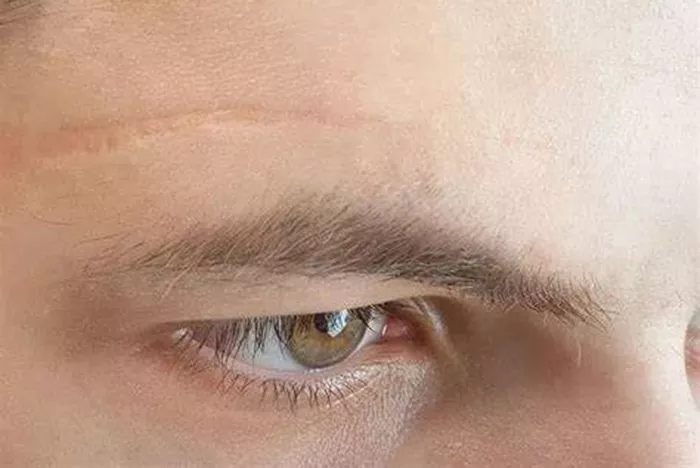Scars are a natural part of the healing process, yet they often become a source of aesthetic concern and psychological distress. Scar revision techniques have advanced significantly, allowing for improved cosmetic outcomes and enhanced patient satisfaction. Among the various methods available, certain approaches are more frequently used due to their efficacy, reliability, and versatility. This article delves into the most common approach to scar revision, examining its principles, techniques, and outcomes.
Understanding Scars: Types and Formation
Before exploring scar revision techniques, it is crucial to understand the types of scars and their formation processes. Scars result from the body’s natural healing process following injury, surgery, or trauma. The extent and appearance of a scar are influenced by factors such as the nature of the injury, the individual’s skin type, and the body’s healing response.
Types of Scars
Hypertrophic Scars: These scars are raised and red, forming within the boundaries of the original wound. They may improve over time but can remain thick and prominent.
Keloid Scars: Similar to hypertrophic scars but extending beyond the wound edges, keloids are often more raised and can continue growing. They are more common in individuals with darker skin tones.
Atrophic Scars: Characterized by a sunken or pitted appearance, atrophic scars often result from acne or chickenpox.
Contracture Scars: These occur when the skin tightens and pulls together, often resulting from burns. They can impair movement and function.
Stretch Marks: Technically known as striae, these scars result from rapid stretching of the skin, often during pregnancy or weight gain.
Scar Formation Process
Scar formation occurs in three main phases:
Inflammatory Phase: Immediately after injury, the body initiates an inflammatory response to remove debris and prevent infection. This phase lasts for a few days.
Proliferative Phase: During this phase, the body produces collagen and other extracellular matrix components to rebuild tissue. This phase can last several weeks.
Remodeling Phase: The final phase, which can last for months to years, involves the maturation and reorganization of collagen fibers, resulting in the final scar.
Principles of Scar Revision
The primary goal of scar revision is to improve the appearance of a scar, making it less noticeable and more cosmetically acceptable. This is achieved through various techniques that aim to:
Reduce Scar Size: Making the scar smaller or less prominent.
Improve Texture: Smoothing out irregularities in the scar’s surface.
Match Skin Color: Blending the scar with the surrounding skin tone.
Restore Function: Addressing any functional impairment caused by the scar.
See Also: What Does DHA Mean in Vitamins?
Factors Influencing Scar Revision
Several factors influence the choice of scar revision technique, including:
Scar Type: Different scars require different approaches.
Scar Location: The location of the scar can affect the choice of technique.
Patient’s Skin Type: Skin color, texture, and thickness can impact outcomes.
Patient’s Medical History: Conditions such as diabetes or a history of keloids can affect healing.
Most Frequent Approach to Scar Revision: Surgical Excision
Among the various scar revision techniques, surgical excision is the most frequently used approach. This method involves removing the scar tissue and carefully suturing the wound to minimize the new scar’s visibility. Surgical excision is particularly effective for hypertrophic and keloid scars, as well as certain atrophic and contracture scars.
Procedure of Surgical Excision
Consultation and Evaluation: The process begins with a thorough consultation and evaluation. The surgeon assesses the scar’s type, size, location, and the patient’s overall health. This evaluation helps in formulating a tailored surgical plan.
Anesthesia: Depending on the scar’s size and location, local or general anesthesia is administered to ensure the patient’s comfort during the procedure.
Excision: The surgeon carefully excises the scar tissue, aiming to remove as much of the scar as possible while preserving healthy tissue. In some cases, an elliptical or W-plasty excision pattern may be used to create a more natural appearance.
Closure: The wound is meticulously closed using fine sutures, ensuring minimal tension on the skin. Techniques such as layered closure and buried sutures may be used to enhance healing and reduce the risk of recurrence.
Postoperative Care: After the surgery, proper wound care is crucial to ensure optimal healing. This may include wound dressings, topical treatments, and instructions on avoiding activities that could stress the wound.
Advantages of Surgical Excision
Precision: Surgical excision allows for precise removal of scar tissue and meticulous wound closure.
Immediate Results: The procedure provides immediate improvement in the scar’s appearance.
Versatility: Surgical excision can be used for various scar types and locations.
Customizable: The technique can be tailored to each patient’s unique needs and scar characteristics.
Disadvantages of Surgical Excision
Risk of Recurrence: In some cases, particularly with keloid scars, there is a risk of recurrence.
Healing Time: The healing process can take several weeks to months, and patients must adhere to postoperative care instructions.
Scarring: While the goal is to create a less noticeable scar, any surgical procedure carries a risk of scarring.
Adjunctive Therapies
To enhance the outcomes of surgical excision, various adjunctive therapies can be employed. These therapies can improve healing, reduce the risk of recurrence, and further refine the scar’s appearance.
Steroid Injections
Steroid injections are commonly used to prevent and treat hypertrophic and keloid scars. These injections help reduce inflammation and collagen production, leading to flatter, softer scars. Steroid injections can be administered before, during, or after surgical excision to enhance results.
Laser Therapy
Laser therapy is a popular adjunctive treatment for scar revision. Different types of lasers, such as fractional lasers and pulsed dye lasers, can improve scar texture, color, and thickness. Laser therapy can be used in conjunction with surgical excision to achieve better cosmetic outcomes.
Silicone Gel Sheets
Silicone gel sheets are widely used for scar management. These sheets create a moist healing environment, which helps flatten and soften scars. They can be applied postoperatively to enhance healing and minimize scar formation.
Microneedling
Microneedling involves the use of fine needles to create controlled micro-injuries in the skin. This stimulates collagen production and improves scar texture and appearance. Microneedling can be combined with surgical excision for enhanced results.
Radiation Therapy
For challenging keloid scars, low-dose radiation therapy may be considered. This therapy helps prevent recurrence by inhibiting collagen production. Radiation therapy is typically used in conjunction with surgical excision for optimal results.
Conclusion
Surgical excision remains the most frequent and effective approach to scar revision, offering precise removal of scar tissue and improved cosmetic outcomes. While there are inherent risks and challenges, the combination of surgical excision with adjunctive therapies can enhance results and patient satisfaction. As the field of scar revision advances, patients can expect even more refined techniques and improved outcomes in the future.
[inline_related_posts title=”You Might Be Interested In” title_align=”left” style=”list” number=”6″ align=”none” ids=”10399,10287,10284″ by=”categories” orderby=”rand” order=”DESC” hide_thumb=”no” thumb_right=”no” views=”no” date=”yes” grid_columns=”2″ post_type=”” tax=””]

































